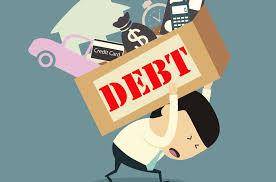Welcome to the anti-budget method user guide! This is the last budget user guide of five in a 6-week series.
Are you tired of always being told to cut spending?
Is writing out a budget every month taking too much of your time?
Just because your budgeting attempts in the past did not work doesn’t mean you cannot do it.
It means you haven’t found the right budget method for your spending habits.
Did you know 65% of Americans’ don’t know how much they spent last month?
Another 1/3 wish they had spent less. (Mint Survey)
The anti-budget will help you control your money, protect your account from overspending, allow you some fun money, and all without writing out a new budget every month.
“Life gives us choices… You can either grab on with both hands and just go for it, or you sit on the sidelines.”
– Christine Feehan
Consider reading this user guide as grabbing on with both hands. Let’s go!

How It Works
The anti-budget method is extremely similar to the no-budget method.
The similarities are you will not write out a new budget every month.
On payday, you will send a portion of your money to a savings account. You can spend all of your leftover money (something I like to call Mad Money) any way you like.
Finally, you are not required to track your spending.
The difference between the no-budget and anti-budget is all of your bills are set up for autopay.
For this method to work successfully, you will need to stop using credit cards for purchases.
As well as, set up a low balance alert on your checking account.
This alert will prevent you from not only over-drafting your bank account but stop you from spending money meant for your bill payments.

Pros and Cons
Pros
- You can set up your budget and then forget it
- Extremely easy to stick to
- Saves you time every month
- No spend tracking required
- No longer miss a bill payment
- You will be able to save money consistently without thinking about it
Cons
- You can develop more bad spending habits
- Your bank balance is unreliable if some of your bill payments are still pending
- Does not work if you owe more money than you make or if your monthly income changes drastically
- It’s easy to overspend without realizing it if you don’t set a low balance alert
- Irregular/yearly expenses will over draft your account if you forget about them.
Catch Up on the Beginning of the Series:
How to Create a Budget for Beginners
5 Types of Budgets for Beginners
How to Create a Biweekly Budget that Actually Works
Discover 9 Easy Steps to Create Your Cash Envelope System
How to Create a Values-Based Budget Using 5 Easy Steps
Steps to Create Your Anti-Budget
Yes, the idea is to avoid written budgets.
However, you will need to write one out at least once per year in order to control your money.
Also, any time your finances change you will want to follow the steps below.
Set Your Budget Goal
Even though you are not writing a budget every month you will still need a goal.
This step helps you stay on track.
The best goals are to pay off debt, start saving money regularly or invest more.
Find All of Your Financial Materials
You’ll need to locate and gather all of your financial materials from last month before you start mapping out your budget.
This will ensure you are not forgetting about any of your expenses.
Below are some suggestions on where to find it all.
- Your free credit report
- All of your bank statements from last month
- Credit card statements from the previous month
- Open all of your mail
To make this step super easy, download the free checklist below.
I created it to help you gather all of this information quickly.
It also includes instructions on where to find your free credit report.
This checklist is part of the Budget & Debt Payoff Planner in the Budget Planners Shop.
LOCATE/GATHER YOUR DEBT CHECKLIST DOWNLOAD

Calculate Your Income
Look through your bank statements to locate all of your paycheck deposits.
Add the totals together to figure out how much you earn per month.
Calculate Your Expenses
Just like you did with your income, look through all of your financial materials to find your expenses.
On a piece of paper start listing out the name of the bill, the next due date, monthly payment amount, and the total amount you owe on debts.
Once you are finished, add all of your expenses together to see how much you are paying out each month.
Subtract this amount from your income. You’ll use this amount in the upcoming steps.
As another time-saver, download the “List of Debt Worksheet” below. It is completely set up for you.
This worksheet is also part of the Budget & Debt Payoff Planner in the Budget Planners Shop.
LIST OF DEBT WORKSHEET DOWNLOAD
More Articles You May Be Interested In:
How to Save Money on a Tight Budget
What Happens If I Don’t Pay My Credit Card Bill
How a Grocery Price List Can Save You Money
Choose the Amount You’ll Send to Savings
From the amount you have remaining after paying expenses, decide how much you will transfer to savings each paycheck.
You can even set up this transfer to occur automatically every pay period so you do not have to think about it.
Set Up Auto Pay for All Bills
If you have bills you are paying manually through your banking or the vendor’s portal. Set them up on auto bill pay.
Keep in mind some of your bills, like utilities and groceries, will change from month to month.
It would not hurt to check in on these bills from time to time to see what is being charged to your account.
Spend Your Mad Money However You Want
Finally, the step you have been waiting for! After paying bills and saving money, the remaining amount is your mad money.
You can spend this any way you like.

How to Manage This Budget Method Effectively
Adapt Your Budget
Writing out a budget is not an easy task. It is even harder sticking to it.
I strongly recommend the first 90 days of using this budget. You follow the steps above each month.
The purpose is to review what you actually spent compared to what your budget says to spend.
Modify the numbers in each area until your budget reflects your actual spending habits.
Create an irregular/yearly expenses master list
Similarly, when you created the list of your monthly expenses, create a master list for your irregular/yearly expenses.
Review your financial statements from the last year to find them all.
You are looking for prescriptions, yearly app subscriptions, vehicle licensing, income tax, etc.
On your list write down the next due date, the amount, and who you owe.
Keep this list handy to make sure you adjust your spending to account for these expenses when they occur.
I review my list every month to make sure I don’t need to adjust my spending habits to accommodate a yearly expense.
Set Up a Low Balance Alert
Set the limit any way you like. In the beginning, you might consider setting your limit high enough to protect the total you need to pay your expenses each paycheck.
For example, if you earn $2,000/month and your bills are $1,000/month. Set the low balance alert to $1,200.
It will mean you are $200 away from overspending your mad money before you start spending your money meant for monthly expenses.
Track Your Mad Money Balance
Even though tracking your spending is never a fun task, it is a good idea to track your mad money balance.
This is one more fail-safe to protect your account from overspending.
Build an Account Buffer
Having an account buffer has saved my account more times than I can count.
An account buffer is an amount you leave in your checking account at all times.
You will never spend this money unless an emergency occurs.
This money is designed to prevent overdraft fees if you overspend.
It will also keep your automatic bill payments from bouncing if an unexpected expense clears your account.
Think of this option as a 3rd fail-safe. If your low balance alert or mad money tracking doesn’t work.
This one will bail you out.
More Articles You May Be Interested In:
How to Save Money on a Tight Budget
What Happens If I Don’t Pay My Credit Card Bill
How a Grocery Price List Can Save You Money
Concluding Thoughts
After reading this, you might be experiencing information overload.
I promise once you learn what is coming in and what is going out you can leave this tedium behind.
At least, once you have a written budget that actually reflects your spending habits.
This effort will be rewarding in the end!
Maybe after reading this you are thinking this may not be the right budget method for you.
No worries, this is the last budget user guide out of 5.
Review the below user guides to find out if one of them is a better fit for you:
How to Create a Budget for Beginners
5 Types of Budgets for Beginners
How to Create a Biweekly Budget that Actually Works
Discover 9 Easy Steps to Create Your Cash Envelope System
How to Create a Values-Based Budget Using 5 Easy Steps
The first 2 posts go into more detail on basic budgeting regardless of the method you are using, along with a summary of how each of the previous budget methods work.
Happy Reading!
References
Subscribe and you'll receive our weekly posts right in your inbox. You'll also be one of the first to be notified when our free budget course opens. Hope to see you there!





